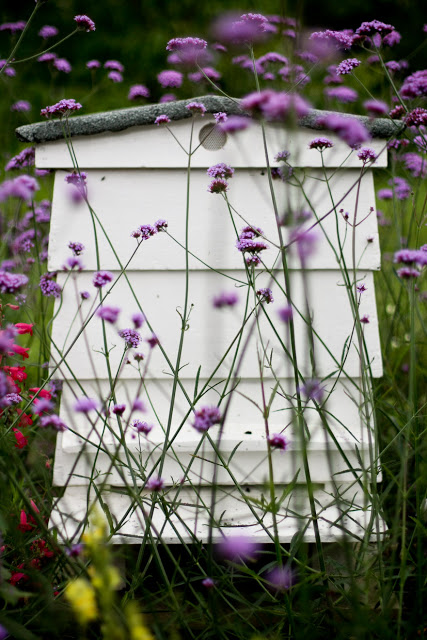 WASHINGTON – The U.S. Department of Agriculture's National Agriculture Statistics Service (NASS) released the results of its first ever Honey Bee Colony Loss survey today. The survey queried more than 20,000 honey beekeepers about the number of colonies, colonies lost, colonies added, and colonies affected by certain stressors and gleans state-level estimates on key honey bee health topics. The survey was developed as part of the "National Strategy to Promote the Health of Honey Bees and Other Pollinators" released last summer, and gleans state-level estimates on key pollinator health topics.
WASHINGTON – The U.S. Department of Agriculture's National Agriculture Statistics Service (NASS) released the results of its first ever Honey Bee Colony Loss survey today. The survey queried more than 20,000 honey beekeepers about the number of colonies, colonies lost, colonies added, and colonies affected by certain stressors and gleans state-level estimates on key honey bee health topics. The survey was developed as part of the "National Strategy to Promote the Health of Honey Bees and Other Pollinators" released last summer, and gleans state-level estimates on key pollinator health topics.
Results from the survey will provide statistically strong baseline information about honey bee losses and can help guide honey bee management decisions in the United States. NASS created the survey questions with input from beekeepers and researchers, and other stakeholders. The results will allow USDA and other federal departments and agencies to create a more unified and complementary approach to implementing the National Strategy, which was unveiled in May 2015.
"Pollinators are essential to the production of food, and in the United States, honey bees pollinate an estimated $15 billion of crops each year, ranging from almonds to zucchinis," said Dr. Ann Bartuska, USDA Deputy Under Secretary for Research, Education and Economics. "This new data will add to USDA's robust scientific body of knowledge on the inventory, movement and death loss of honeybees in the United States."
For this report, NASS surveyed 3,300 beekeeping operations with five or more colonies on a quarterly basis, following their operations throughout the year. In addition, NASS surveyed a sample of 20,000 beekeepers who have less than five colonies annually. Data collected covers the state in which colonies are located, movement of colonies between states, newly added or replaced colonies, number of colonies lost, colonies renovated, and presence of colony stressors and specific signs of illness. The responses allow USDA for the first time to differentiate patterns between small-scale and commercial beekeepers, analyze data on a state-by-state basis, and compare more specific quarterly losses, additions and renovations for larger scale beekeepers.
According to the survey released today, there were 2.59 million or 8 percent fewer honey bee colonies on Jan. 1, 2016 than the 2.82 million present a year earlier on Jan. 1, 2015 for operations with five or more colonies. New quarterly colony data allow new levels of analysis. For example, there was an 18% loss of colonies in the January-March quarter in 2015 and a 17-percent loss in the same quarter in 2016. Honey beekeepers with five or more colonies reported Varroa mites as the leading stressor affecting colonies. They also reported more colonies with symptoms of Colony Collapse Disorder lost in the first quarter of 2016 with 113,930 than the 92,250 lost in the same quarter in 2015.
This research complements other information USDA and partners have been collecting for years. For example, in March NASS released its annual report on
honey production and prices for 2015. This report, which is used by USDA, producers, economists, agribusiness and others, found that U.S. honey production in 2015 from producers with five or more colonies totaled 157 million pounds, down 12 percent from 2014. There were 2.66 million colonies from which honey was harvested in 2015, down 3 percent from 2014. Honey prices were 209.0 cents per pound, down 4 percent from a record high of 217.3 cents per pound in 2014.
In addition, for the past 10 years USDA's National Institute of Food and Agriculture has helped fund collaboration between the Bee Informed Partnership and the Apiary Inspectors of America to produce an annual survey that asks both commercial and small-scale beekeepers to track the health and survival rates of their honey bee colonies. This year's survey results, which were released May 10, were gleaned from the responses of 5,700 beekeepers from 48 states who are responsible for about 15 percent of the nation's managed honey bee colonies.
The data being released by NASS today adds to these two efforts by providing a baseline federal statistical resource to track change of reported numbers and death loss in colonies managed by small hobbyists up to the largest commercial producers.
The National Strategy, developed under the leadership of the U.S. Environmental Protection Agency (EPA) and USDA) set three overarching goals: 1) reduce honey bee colony losses to economically sustainable levels; 2) increase monarch butterfly numbers to protect the annual migration; and 3) restore or enhance millions of acres of land for pollinators through combined public and private action. The plan was accompanied by a science-based Pollinator Research Action Plan. In addition to the surveys mentioned above, a number of research activities within USDA's Research, Education and Economics mission area have been initiated since the action plan was released; for example:
- NIFA is currently seeking applications for a total of $16.8 million in grant funding for research projects with an emphasis on pollinator health;
- The Agricultural Research Service (ARS) is organizing a national bee genebank as part of the agency's response to ongoing problems facing the country's beekeepers. The genebank, which will be located in Fort Collins, Colorado, will help preserve the genetic diversity of honey bees, especially for traits such as resistance to pests or diseases and pollination efficiency;
- ARS has launched a research project aimed at determining the effects of seasonal pollens on brood rearing, on bees' immune response to pathogen stress, and on whether geographic location influences such effects;
- ARS has launched a study to determine whether hyperspectral imaging can be used as a non-invasive method of monitoring bee colony health; and
- ARS has launched a project to determine colony survival, population size, cost and the return on investment of two overwintering strategies for controlling Varroa mites.
 WASHINGTON – The U.S. Department of Agriculture's National Agriculture Statistics Service (NASS) released the results of its first ever Honey Bee Colony Loss survey today. The survey queried more than 20,000 honey beekeepers about the number of colonies, colonies lost, colonies added, and colonies affected by certain stressors and gleans state-level estimates on key honey bee health topics. The survey was developed as part of the "National Strategy to Promote the Health of Honey Bees and Other Pollinators" released last summer, and gleans state-level estimates on key pollinator health topics.
WASHINGTON – The U.S. Department of Agriculture's National Agriculture Statistics Service (NASS) released the results of its first ever Honey Bee Colony Loss survey today. The survey queried more than 20,000 honey beekeepers about the number of colonies, colonies lost, colonies added, and colonies affected by certain stressors and gleans state-level estimates on key honey bee health topics. The survey was developed as part of the "National Strategy to Promote the Health of Honey Bees and Other Pollinators" released last summer, and gleans state-level estimates on key pollinator health topics.



